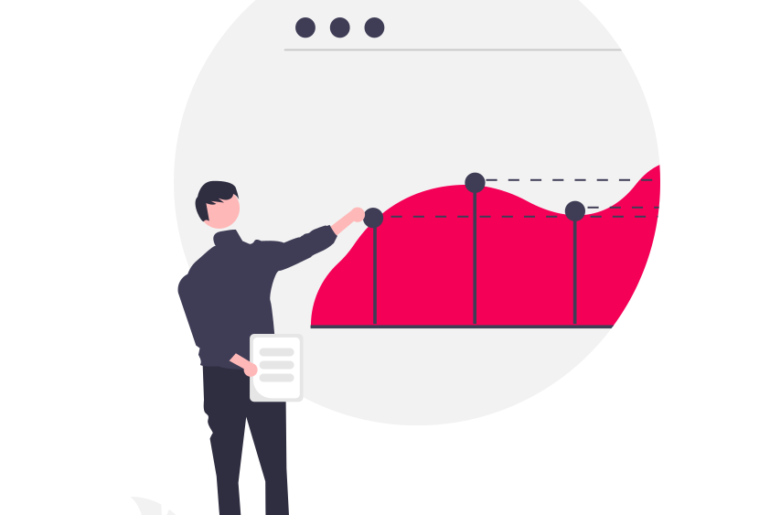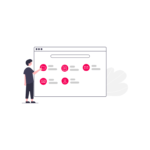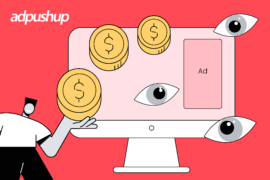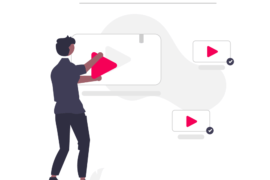It is possible to have guidelines of what should work, but this does not guarantee success. Read the blog to know all about conversion rate optimisation.
There is very little content online which focuses on explaining the conversion goals for publishers and their optimisation. So in continuation with our last post, let’s begin with understanding conversion optimisation to improve sharing.
You probably already know the first rule of social media (and viral marketing for that matter) that there are no hard and fast rules, since it’s an unpredictable medium. At best you can have guidelines of what should work, but this does not guarantee success.
What works in one case will not necessarily be repeated, because you’re dealing with a rapidly changing consciousness stemming from billions of individual minds.
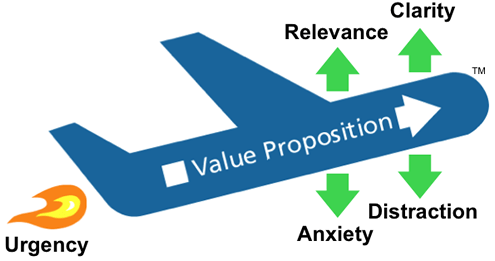
Nevertheless, you don’t have to be the next viral superstar to learn the patterns of social sharing. Scott Brinker of Ion Interactive wrote an article on why sharing on social platform works – because you have real people interacting, who add “authenticity” to the experience.
It goes beyond the pseudo testimonial and actually works because of social proof and authority, since the likes of Facebook, Twitter, and LinkedIn provide profiles of individuals, citing their works, their job positions, and their titles, among other relevant information.
As he writes, “Social media thrives because it eschews such artificiality.”
The rise of social media is also allowing celebrities, company executives and owners to reach out to people as individuals and showing themselves to be personally concerned with their product.
Read more:
Optimising Adsense Revenue and picking the right niche
How to Improve Consent Rate for Publishers
Brian Massey, a conversion optimization scientist at ConversionScientist.com interviewed by David Angotti, stated that the primary difference in social media sales is “amplification”, and that the best way to use the medium is to study the metrics of online viewer behavior, including where the information was shared, how many impressions it received, how many clicks were reported, and how many users converted.
And so you have the metrics and analyses, but what exactly are you searching for? You’re looking for the reactions of your readers, based upon the information you provide. Your social media profile states – who you are and what you do.
When you share information you aim to provide content which your audience would find valuable. Bryan Eisenberg described the “Conversion Trinity” as Relevance, Value and Call to Action.
Now the question becomes: how would you create value in a Facebook post or tweet, considering the limited space and the unofficial social “restrictions” that are placed upon you by consumers who don’t like braggarts or hyperbole?
This is what the marketer calls the “persona”, the stand-ins we create as we assume the mind of the reader. We put on this hat and try to think like a visitor as we visit our own social media page.
And now, with a differing and contrary perspective to our own goals, we ask: how is this post or tweet relevant? What logic do you use indicating why they should buy from you, and what value are you ultimately bringing them? Lastly, to complete the “conversion trinity” what action are you prompting them to take and what confidence have you given them allowing them to rationalize this action?
If your “persona” can’t answer these questions then you haven’t really even started to deal with social media in a business context. Sharing information is great, but it’s best to stop to think about how each and every post fits in with your conversion formula:
- Relevance
- Value
- Call to Action
All focused on your product, whether directly or indirectly.
I’d like to think that even if you are drawing attention to someone else, and tooting someone else’s horn on Facebook or Twitter, that you’re still actually talking about your own product. You’re still mirroring the same values, the same philosophy, and the same call to action. As in, “This case cited here proves that…(the same lesson you’ve been advocating when selling your own product)”
For that matter, ask yourself if you’re really doing your best to make your story shareable and valuable to your immediate social community. If it is valuable to your immediate social circle, the amplification will happy by itself.
Blogger Dan Zarella at SociallyStacked.com posted 14 ways to get more Facebook shares based on a study of 1.3 million Facebook posts. Some of these ideas were self-explanatory: consistency in quantity, timing (assuming that 50% or more of your audience only views the posts you make when they’re awake), and keeping your headline and descriptions fairly short: Less than 150 words generally.
Here are some other points, which most content writers may already know:
- Use high quality images that grab attention
- Make every post feel relevant so that the audience knows you know their demographic
- Use an authentic voice, one that speaks directly to your demographic
- Be entertaining and educational
- Have a sense of urgency
- Include a call to action
The last two are particularly interesting, as I’ve seen many social marketers and publishers fall so far backwards into the “law of attraction” thinking, that they never sell anything or they never ask their following to do anything in particular.
Sometimes you have to motivate your audience to take minor action (like sharing a post) by direct or indirect suggestion. And this will be a good precedent, as they will slowly build trust for you, based on a series of minor actions you’ve asked them to do.
Now the “have a sense of urgency” bit is going to lead us directly into the subject of…
Conversion Optimization to Increase User Engagement
What works best when it comes to social media is “viral content”, which is information or some form of stimuli so unique it demands to be shared, just to evoke conversation.
Now, some people think viral means “Grumpy Cat”, or Goyte’s Somebody That I Used to Know video or some sort of inexplicably popular concept that becomes an overnight sensation.
No, it’s great if it happens but it’s not worth holding your breath for.
Viral marketing also encompasses practical, incentive-based informational pages that your audience is going to read, remember and share with their friends. As we discussed, this is going to be information that they find valuable because it is pertinent to their own lives.
Marketers search for “10 tips to improve SEO” and “5 tips for creating a successful website” all the time, and savvy web publishers are smart enough to know exactly what their target reader is looking for.
So when you want something shared or commented on, what are you doing to evoke all of this activity? What actions are you taking to produce the reactions? Is your content going to be seen as a valuable resource, something that can improve their education, their understanding, or comprehension of their own market?
Even if all you want to do is provoke a comment, are you actually considering what is required to instigate this action from your audience? What is your audience passionate about? What is going to motivate them—no, what is going to force them—to respond? What emotional trigger (again, tied into their life’s story) is going to get a reaction from them?
And don’t forget to ask, how can you turn all of this vociferous attention and debate to convert more people? By using a call to action. Never leave them hanging or they’ll resent you for it. Give a point to everything, and you have a loyal consumer.
Social Psychology and Emotional Reactions
Learning the visitor’s emotional reactions to business strategy is one of the least understood aspects of consumer psychology. It’s not always about creating a vivid picture; sometimes it’s the triggers we pull in between these vivid images that actually gets the big reaction we want.
Consider this: Professor Robert Cialdini claims from his research involving the American Cancer Society, that setting minimums (very small goals as opposed to high demands) is the best way to avoid action paralysis. Essentially you are building commitment by taking it slow, not jumping into an exclusive “relationship” if you will, but a minimum action that allows readers to experiment with the idea of full purchase.
Targeting buyers by their spending style is another often neglected principle. According to economic theorists, there are three spending styles: cheap or none at all, thrifty spenders and impulsive spenders.
The less people spend, (which is a likelihood in recession) the more you have to bundle products together, talk about product value as relates to long-term savings, and provide discounts. Most people assume everyone is an average buyer – That’s ignoring the reality of two other types of buying personalities!
What about the famous “wait and see” cop out? This may be old school but it’s still true today. Scientific research from MRI studies show that the frontal cortex is active when we wait and think.
That means we’re processing, comparing, rationalizing—and probably thinking up dozens of reasons (emotional reasons as well as logical reasons) why we should avoid spending money, we don’t have to spend. This is why online sales should always focus on fast relief, instant gratification and quick resolution of the need or problem.
Perhaps the most powerful motivator in human sales or human action entirely is the primal instinct to belong; to communicate with others, and to believe in something worthwhile.
Successful businesses use this logic. Sometimes a company can gain customer loyalty by finding common enemies and using this leverage to build up their alternative solution. They also use the “devil’s advocate” technique, which involves questioning their preconceived ideas so that they actually increase the confidence of already-interested customers, essentially making them “sell it to themselves.”
The point is, these techniques do succeed in stimulating both the logical and emotional sides of the brain. Rather than choosing one or the other, involve both motivators. A person buys when the logical brain gives them a “go ahead”, as if to say, this is a worthwhile investment—not an impulse.
It’s best to determine if there is a technical problem that could be driving away targeted traffic before moving onto to change the text content itself. When it comes to web design, one of the worst culprit is poor site design leading to a unsatisfactory user experience.
Nick Eubanks on Search Engine Watch pinpointed 20 things that websites might be doing wrong, and some of these were entirely technical in nature, meaning that the site was so visually uncomfortable to the eyes that users would rather forgo the valuable information altogether than continue to suffer!
Some of the most common problems included:
- Pop ups
- Large multimedia files, especially when “forced”, tend to take up CPU resources
- Confusing navigation
- Poor design in terms of colors, graphics, layout
- Long loading times
- Third-party software that freeze or slows down the screen
- 404 pages (customised ones with helpful guides work better than default 404s)
- No mobile site (increasingly important with users who don’t want to wait and want fast apps that are designed for mobile, not just PC programs that convert to a mobile screen)
When it comes to content, complaints included:
- Content that was too obvious or sales-oriented rather than consumer-focused
- Distracting irrelevant content
- Missing search box
- Long paragraphs, long pages
- Material is too advanced, leaving beginners in the dark
In other words, the sale is blown because of poor presentation.
Ask yourself first – if the information is effectively organised. Is it comfortably segmented into categories so that users can choose where in the sales presentation they want to begin? This will prevent web viewers from having to load multiple pages looking for the simple answer they want.
In terms of ideas for content, are you using personas to develop these articles and keywords, using hooks and teasers that instantly convey to your audience this content is relevant and pertinent to their career, or their life? Keywords should be used methodically and to guide users to where they should go to learn more sequential information rather than mindless repetition.
Finally, ask yourself as a web publisher if your entire content “map” expresses all the conversion points that you are hoping to impress upon your readers? Will they get an immediate sense of what to do from whatever point they are at on your site?
The experience must be consistent and it must be catered to the life and work expectations of your viewers.
Remember that clicks are largely irrelevant if they don’t convert. It’s not enough to produce millions of clicks—rather, you should show advertisers that you understand what your visitor needs, and show your visitors that you understand where they are in life, what matters to them, and what value you have to offer.
It’s the very reason any of us have a conversation with anybody we meet in life. Sharing valuable lessons and experiences, resolving each other’s problems, it’s what makes the world go round. Be part of that world by avoiding marketing jargons and instead making a sincere effort to communicate with your customer.
FAQs
Optimization of conversion rate (CRO) refers to increasing conversions from a website or mobile app. The goal of CRO is to generate ideas for elements on your site or app that can be improved, then test those hypotheses using A/B and multivariate tests.
A conversion rate measures the percentage of users who complete a desired action. To calculate conversion rates, take the total number of users who convert (by clicking on an advertisement, for example) and divide it by the overall audience size.
In order to optimize conversion rates,
i. All CTA (call-to-action) buttons should be in a strong color.
ii. CTAs should be placed above the fold.
iii. Drive sales by using urgency (e.g., time-limited offers).
iv. Display testimonials at all times.
v. Reduce the number of form fields on your forms.

Shubham is a digital marketer with rich experience working in the advertisement technology industry. He has vast experience in the programmatic industry, driving business strategy and scaling functions including but not limited to growth and marketing, Operations, process optimization, and Sales.
